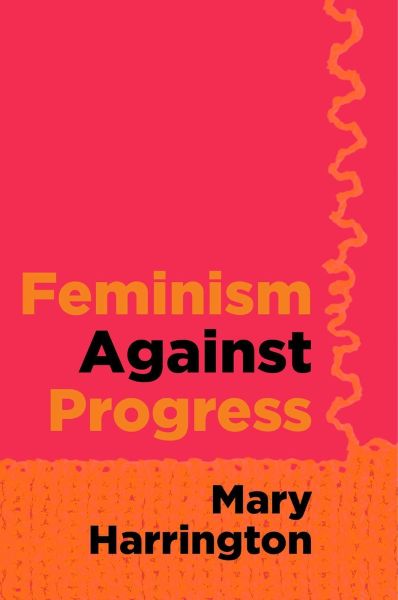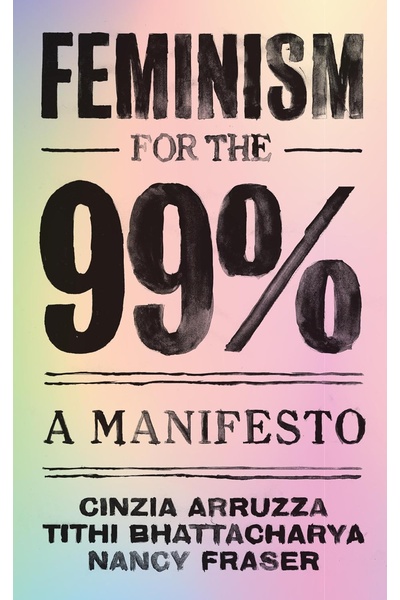Feminism Against Progress
UnHerd columnist Mary Harrington introduces 'reactionary feminism,' critiquing modern feminism as serving only elite professional women. She argues technological progress commodifies women's bodies and reproductive abilities, calling for a fundamental reassessment of what 'progress' means for most women.

📝 Book Review
In contemporary feminist discourse, “progress” seems self-evidently good. From suffrage to workplace equality, from contraceptive rights to reproductive autonomy, the history of the feminist movement is often narrated as an epic of continuous advancement. However, British writer and UnHerd columnist Mary Harrington presents a radical and controversial argument in “Feminism Against Progress”: so-called “progress” is not necessarily beneficial for all women and may actually be pushing most women into increasingly vulnerable positions. This 2023 work marks the birth of what she calls “reactionary feminism”—a new current that challenges mainstream feminism’s optimistic attitude toward technology, markets, and individual freedom, calling us to reconsider modernity itself and its impact on women.
Harrington is not a conservative in the traditional sense; her intellectual trajectory is quite distinctive. She earned a First in English Literature from Oxford University, but for the next two decades deliberately avoided writing, working as a cleaner, communard, marketing executive, internet entrepreneur, and psychotherapist, among other roles, eventually “accidentally” returning to writing. This diverse life experience gives her a rare perspective—she is neither an academic theorist nor a professional activist, but observes from the real lives of ordinary women the chasm between feminist discourse and women’s actual circumstances. Her work regularly appears in mainstream outlets like The Times, New Statesman, and The Spectator, while she maintains a weekly column at UnHerd and runs an independent newsletter on Substack titled “Reactionary Feminist.”
The book’s core argument can be summarized in three interconnected claims. First, women’s liberation was less the result of moral progress than a byproduct of material changes brought by the Industrial Revolution. Second, we have transitioned from the industrial age to the digital age, where technology liberates us from natural limits and embodied sex differences, but this “liberation” primarily benefits elites while making women’s bodies, human intimacy, and female reproductive capacities easier to commodify. Third, contemporary “feminism” has been captured by affluent white-collar women who advance their own economic and political interests under the pretense of representing all women, wielding the term like a club against anyone—male or female—who dissents.
The material foundations from Industrial Revolution to Sexual Revolution. Harrington first challenges a deeply entrenched narrative: that women’s liberation resulted from the triumph of Enlightenment values and human rights ideals. She argues this moralistic historical view ignores more fundamental material factors. In pre-industrial societies, human life depended heavily on physical labor, and physiological differences between men and women—especially women’s reproductive capacity and relatively weaker physical strength—determined fairly strict gender divisions of labor. Women were not confined to the domestic sphere because of “backward ideas,” but because in an economy dominated by agriculture and handicrafts, pregnancy, nursing, and childcare practically conflicted with most productive activities.
The Industrial Revolution changed all this. Machines replaced most work requiring physical strength; factory production no longer intertwined with domestic life as agriculture had. More importantly, contraceptive technology’s emergence allowed women for the first time to somewhat control their fertility. Harrington emphasizes that it was these material changes—not “progressive” ideas—that made women’s entry into public life, pursuit of education and careers possible. The milestones we consider feminist victories—women’s suffrage, equal pay, educational equality—all rested on the material foundation created by industrialization.
But Harrington does not celebrate industrialization. Rather, she notes that while industrialization “liberated” women, it also initiated a process of increasingly marketizing human life. In pre-industrial society, the family was the basic unit of production and consumption; household labor—cooking, weaving, caring for young and old—though unrecognized by markets, was essential to family survival and thus possessed substantive value and power. Industrialization transferred more and more productive activities from households to factories and markets, erasing the economic value of domestic labor and correspondingly diminishing women’s status within families. When feminists demanded women enter the workplace to gain “liberation,” they actually accepted a premise: only market-recognized labor has value.
From Sexual Revolution to reproductive technology’s promises and pitfalls. If the Industrial Revolution was the first “liberation,” then the mid-20th century Sexual Revolution and the pill’s popularization constituted a second “liberation.” Harrington is highly critical of this. She argues the Sexual Revolution primarily benefited men, not women. When sex was no longer necessarily tied to reproduction, when “free love” became the new norm, women lost the protective structures of traditional society—marriage commitments, male economic responsibility for offspring, community supervision of sexual relations. The pill placed the entire burden of contraception on women, while men benefited without needing to bear consequences of sexual activity.
Worse still, the Sexual Revolution paved the way for further commodification of sex and reproduction. When sex became separate from marriage and reproduction, it more easily became a tradable commodity. The explosive growth of the pornography industry, legalization of surrogacy, commercial trading of eggs and sperm—all conducted under banners of “individual freedom” and “women’s choice”—but Harrington questions: is this really the “freedom” women want? Or does this merely make women’s bodies easier to exploit by markets?
Harrington is particularly concerned with surrogacy. In many countries, commercial surrogacy is supported by liberal feminists on grounds that it gives women the “choice” of how to use their wombs while helping couples unable to conceive. But Harrington points out surrogacy is actually wealthy people renting wombs from the poor—because those who actually become surrogates are almost always economically vulnerable women. Surrogacy contracts reduce pregnancy and birth—among the most profound human experiences—to quantifiable terms: advance payments, milestone payments, breach penalties. The fetus becomes a product, the womb a production facility, the mother a contractor. Is this not the most extreme commodification of women’s bodies?
Elite feminism and class blindness. Harrington’s sharpest critique targets contemporary mainstream feminism’s class character. She argues that since the 1970s, the feminist movement has increasingly been dominated by highly educated middle-class women in white-collar professions. These women’s core demand is entering male-dominated professional elites—becoming CEOs, lawyers, politicians, professors. To achieve this goal, they need to shed traditional care responsibilities, typically accomplished by hiring other (often poorer, women of color) women to care for their children, clean their homes, and prepare their meals.
This “feminism” actually reinforces class inequality. When elite feminists celebrate “breaking the glass ceiling,” they rarely concern themselves with women who have no chance of approaching the ceiling—women working in fast food restaurants, nursing homes, cleaning companies; single mothers barely making ends meet with multiple gigs. More ironically, elite women’s “success” often rests on exploiting other women’s labor. When a female lawyer works 12-hour days, who cares for her children? When a female executive travels for business, who cleans her house? The answer is often women without higher education, without career advancement opportunities, earning meager wages.
Harrington also criticizes mainstream feminism’s naive optimism about technology. From the pill to IVF, from egg freezing to surrogacy, technology is portrayed as a tool for women’s liberation. But Harrington reminds us these technologies often have dual effects. Egg freezing allows career women to delay childbearing, but it also makes it easier for employers to demand women fully commit to work during childbearing years, since “you can always have children later anyway.” IVF expands reproductive possibilities, but it also creates a massive fertility industry bringing women’s eggs, wombs, and embryos into commercial transactions. Every “liberatory” technology is simultaneously a new form of control and commodification.
Reactionary feminism’s political claims. So what exactly does Harrington’s “reactionary feminism” advocate? “Reactionary” in contemporary political discourse often carries negative connotations, suggesting regression, conservatism, opposition to progress. Harrington consciously reclaims this term to represent a fundamental questioning of “progress” narratives, a willingness to seek wisdom from the past. Her feminism does not seek to return to the 19th century, but to question a premise: that new is necessarily better than old, that technological development equals improvement in human wellbeing.
Specifically, Harrington calls for revaluing labor and practices devalued by modern society, especially care work. She argues mainstream feminism, in pursuing workplace equality, actually accepted patriarchal capitalism’s value system—that only paid market labor has value. But caring for children, elderly, the sick, maintaining family and community relationships—aren’t these humanity’s most fundamental needs? Why should we devalue this work, considering it an “insufficient” choice?
Harrington also questions “choice” as feminism’s core value. Contemporary liberal feminism often equates women’s liberation with “freedom of choice”—choosing work or staying home, choosing childbearing or not, choosing marriage or singlehood. But Harrington notes that in a society full of structural inequality, many so-called “choices” are actually coerced. A single mother “choosing” three part-time jobs is not because she loves work, but because she needs to feed her children. A young woman “choosing” to become a surrogate is not because she finds it meaningful, but because she needs money. Calling these “free choices” distorts reality.
Additionally, Harrington holds a critical stance on the transgender movement, making her a more controversial figure. She believes transgender ideology represents an extreme manifestation of “progress” logic—assuming we can completely transcend biological sex through technology, that bodies are merely “raw material” to be modified at will. But she warns this technological attitude toward bodies will ultimately harm women, as it erases the reality of women as a biological category, thereby erasing the material basis for sex-based oppression and discrimination. If “woman” is merely a self-identification, then political claims based on female biological realities—such as reproductive rights, menstrual equity, anti-sexual violence—lose their foundation.
Controversy and reflection. “Feminism Against Progress” has sparked fierce debate since publication. Supporters believe Harrington courageously points out liberal feminism’s blind spots and class character; her critique of technological commodification is especially important. Critics argue her “reactionary” position actually defends patriarchy; her nostalgia for traditional family and gender roles ignores these structures’ oppression of women. Her stance on transgender issues has led some to label her a “trans-exclusionary radical feminist” (TERF).
Theoretically, Harrington’s arguments do have some problems. First, her depiction of pre-industrial society may be overly romanticized. While she correctly notes household labor had economic value then, she seems to downplay the legal and social restrictions women faced in premodern societies—no property rights, no political rights, subordinate status in marriage, limited educational opportunities. Second, while her class analysis is sharp, solutions remain relatively vague. Critiquing elite feminism’s class character is one thing; proposing a political program that truly serves working-class women is another, and the latter is insufficiently developed in the book.
However, the core questions Harrington raises cannot be evaded: when “progress” primarily benefits a minority elite, when “freedom” becomes a fig leaf for commodification, when technological development makes humanity’s most intimate experiences buyable and sellable, should we still unconditionally embrace “progress”? Her critique forces us to consider what feminism’s goal actually is—getting a few women into positions of power, or transforming the power structure itself? Enabling women to compete equally with men in markets, or questioning market logic’s domination of human life?
“Feminism Against Progress” also reminds us of feminism’s internal diversity and disagreements. Feminism has never been a monolithic ideology, but a tradition of thought full of tensions and debates. Liberal feminism, socialist feminism, radical feminism, Black feminism, ecofeminism—each has different understandings of women’s oppression’s roots and liberation’s pathways. Harrington’s “reactionary feminism” joins this ongoing conversation; even if we disagree with all her claims, the questions she raises—about technology, markets, bodies, class—all merit serious engagement.
This book also has special relevance for contemporary Chinese contexts. China is undergoing rapid modernization and digitalization; women face challenges similar to but distinct from the West: declining fertility rates amid shifting reproductive policies, workplace gender discrimination and marriage-childbearing penalties, unequal distribution of family care responsibilities, gray areas in surrogacy and assisted reproductive technologies. Harrington’s questioning of “progress” reminds us to remain vigilant while embracing technology and marketization, not to devalue care labor while pursuing workplace equality, and not to ignore structural constraints while emphasizing individual choice.
Ultimately, “Feminism Against Progress” is valuable not for providing a complete set of answers, but for raising fundamental questions that force us to reexamine assumptions we take for granted. It is a provocative book, one that will make many readers uncomfortable, but precisely because of this, it is an important book. In an era when “progress” seems an unquestionable creed, Harrington reminds us that genuine critical thinking requires daring to question mainstream narratives, even if it means being labeled “reactionary.” For anyone concerned with feminism’s future direction, this book deserves serious engagement—whether or not you ultimately agree with its conclusions.
Book Info
Related Topics
🛒 Get This Book
 Buy on Amazon
Buy on Amazon Related Books
Book Discussion
Share your thoughts and opinions on this book and exchange insights with other readers
Join the Discussion
Share your thoughts and opinions on this book and exchange insights with other readers
Loading comments...


